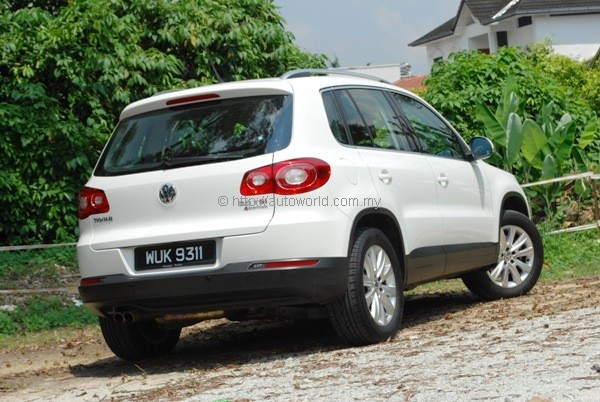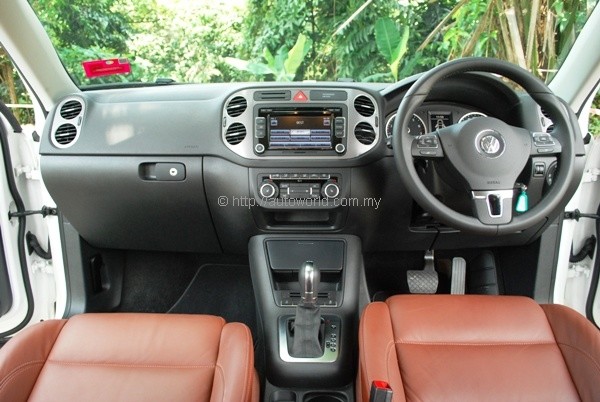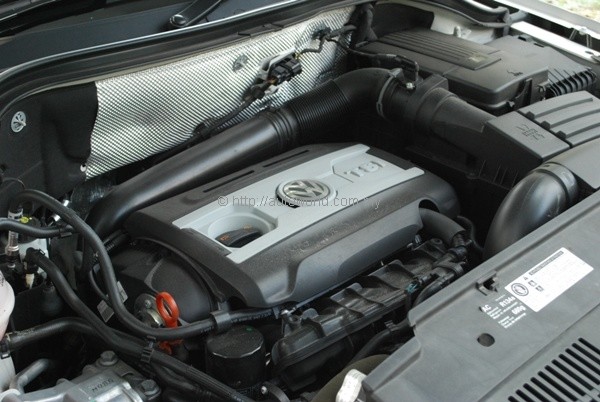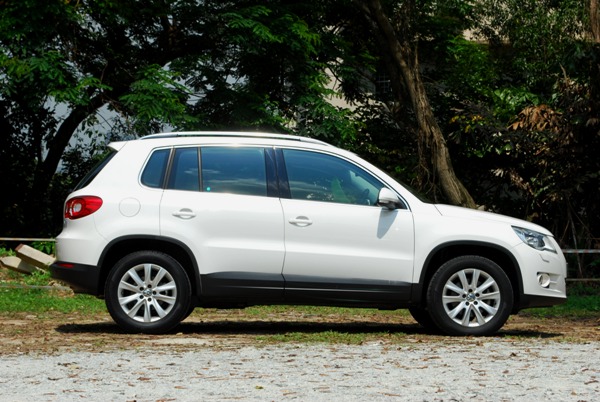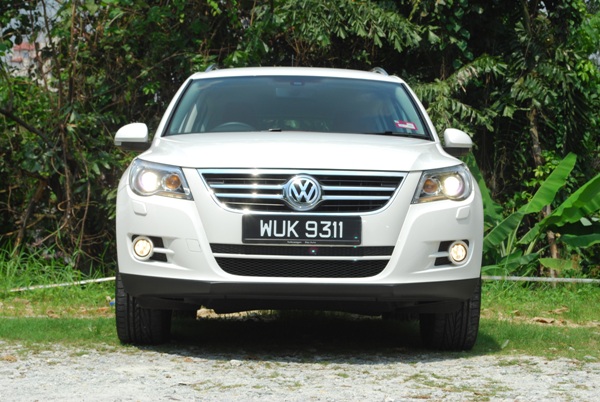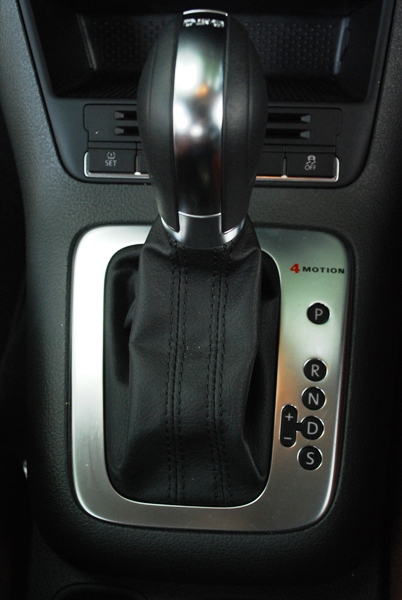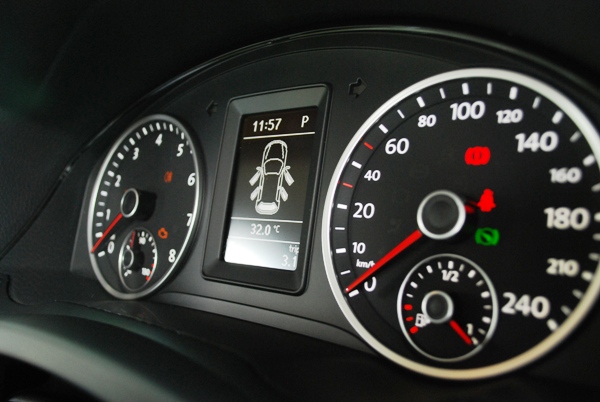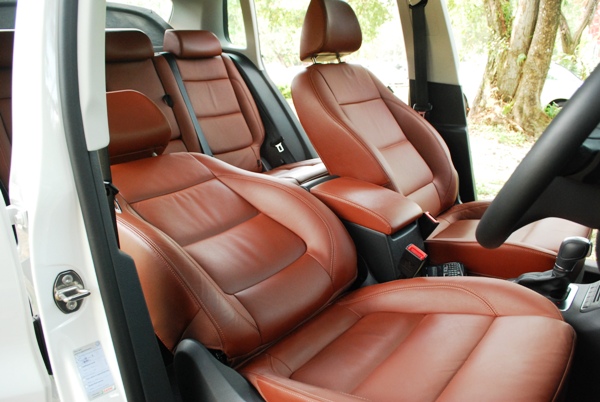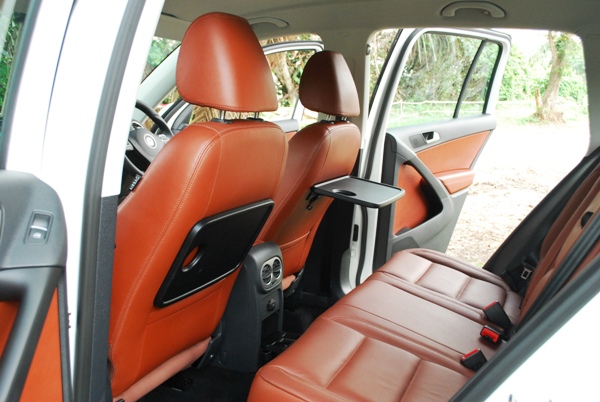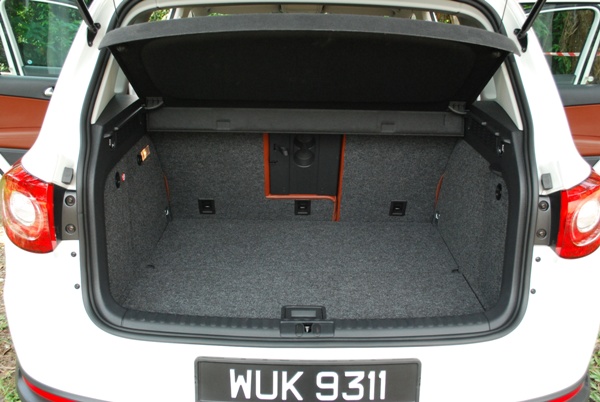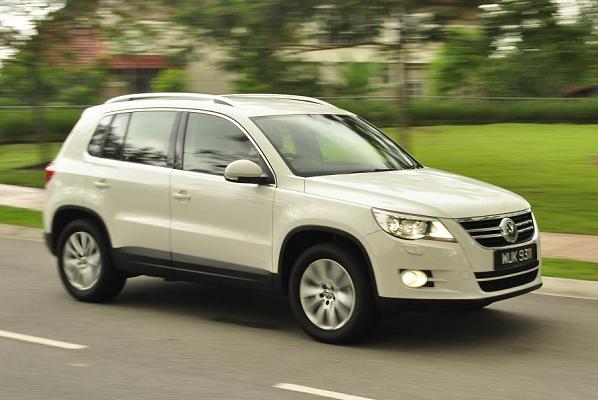Volkswagen Tiguan 2.0 TSI Test Drive Report
The Volkswagen Tiguan made its global debut a little more than three years ago, in late 2007. Within a year, Volkswagen Group Malaysia (VGM) had it in our shores. Worldwide, the Tiguan has been yet another success story for the VW Group, selling 572,000 units throughout the globe, and counting.
Under the Tiguan’s skin is in actual fact, the Volkswagen Golf. The venerable PQ35 platform is once again called upon to supply the underpinnings of Volkswagen’s baby SUV, and along with it the same set of engines which go into various versions of the Golf. It is unrelated to the Audi Q5, which uses the Audi modular platform that supports north-south mounted engines.
Specs and Kit
The Tiguan uses transverse mounted four-cylinder motors, and for Malaysia, the sole variant is powered by the 1,984cc EA888 engine from the Golf GTI. Quoted outputs for this turbocharged direct injection engine are as per the GTI, with 208hp produced from 5,300 to 6,200rpm and a useful 280Nm of torque spread between 1,700 and 5,200rpm.
When it arrived in 2008, VGM offered the Tiguan with a 6-speed Tiptronic auto, but that has since been supplanted with a 7-speed DSG as per our test car here. It still spins four wheels though, using a Haldex-sourced permanent all-wheel drive system – badged 4Motion under VW nomenclature.
VGM did not use the new transmission as an excuse to bump up the Tiguan’s asking price, so you’re still going to get change from RM260k after insurance. This puts the Tiguan nicely between both variants of the BMW X1 – sDrive18i (around RM245k) and xDrive20d (over RM300k).
Kit count is generous, but there are a number of notable omissions, which we will go into later. You get cruise control, dual-zone air-conditioning, rear blowers, split-folding rear seats, auto-dimming mirrors and power adjusting for the driver’s seat. The front passenger’s seat is manually adjustable, but weirdly, it cannot recline as low as the driver’s.
The audio unit accepts auxiliary inputs and comes with a touchscreen almost the size of a 2-DIN unit, and doubles up as a display for the reverse camera. On the unit is also a button labeled ‘Phone’, but don’t be fooled into thinking this car has Bluetooth connectivity – it doesn’t, and that’s an unfortunate omission. The ‘Phone’ button only mutes the audio so that you can talk uninterrupted. There’s no sat-nav.
One thing you can count on VW, however, is that they don’t skimp on safety kit, and on that front, you’re getting ABS, EBD, Anti-Slip Regulator (ASR), stability control, and traction control. All passengers have three-point seat belts, and those at the front get height adjustment and pre-tensioners. If things do go horribly wrong, a total of six airbags can be called upon.
Driving Impressions
Having a full 280Nm on tap almost across the full rev spectrum means that straight line pace is not where the Tiguan is found lacking. You do get turbo lag when flooring it from low revs, and at times the DSG also hesitates, but once on song, the Tiguan accelerates smoothly and briskly, allowing for confident trunk road overtaking.
Its Golf underpinnings also mean that the Tiguan is not short of talent at the curves either, but there is a distinct lack of feedback from its electric power steering. During a quick run along the old trunk road to Genting Highlands and back, the Tiguan drove competently, but without being fully engaging – communication with its steering is distinctly one way.
The Tiguan contrasts nicely with its rival from Munich, the BMW X1. We are quite sure that in its 2.0-litre diesel guise, the X1 will leave the Tiguan for dead in any road you’d care to think of – the Tiguan will be outrunned on the straights, and outgunned in the corners. Even though the VW Group has Audi boasting of its quattro prowess, it is BMW’s xDrive that feels like the real deal when pushed hard around the bends.
So, the BMW is nicer to drive, but this does not automatically render the Tiguan inferior. This little fella has other virtues worth appreciating, chief amongst them is a cabin built to typically high standards of the VW Group. We get the soft plastics that everybody loves to write home about, and almost every part of the dashboard delivers excellent tactile feel.
Ride comfort is well-judged. The suspension is just about firm enough to keep body roll in check, but not so stiff to the point where trips over poorly tarred surfaces will have your organs rearranged. Against the X1, the Tiguan comes across as a better balanced package, and one that is also much easier to live with.
Conclusion
As it stands, the Tiguan costs a potential buyer a whole RM100k more than alternatives such as the Honda CR-V and Nissan X-Trail. That RM100k chasm you see is none other than AFTA at work, because the Tiguan arrives fully imported from Wolfsburg (read: high taxes!), whilst the CR-V is locally assembled and the X-Trail is imported from Indonesia.
In markets such as Australia and the UK, Volkswagen prices the Tiguan on par with the X-Trail rather than the X1. There, the Tiguan is a choice you can make even with your eyes closed, especially after you consider the immense build quality, advanced drivetrain package and well-sorted dynamics on offer.
On the whole, the Tiguan is yet another competent offering from Volkswagen, and we have no problems justifying a premium for its package over Japan and Korea’s offerings. But, good as it may be, some might find RM100k to be too steep a premium. You can thank our auto policies for that.
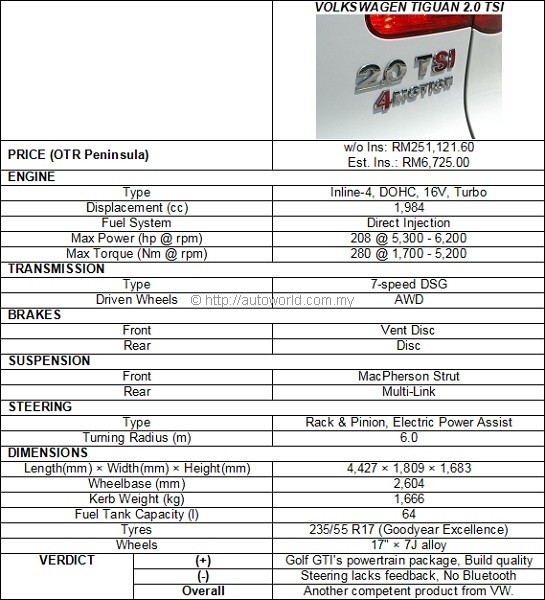 |




